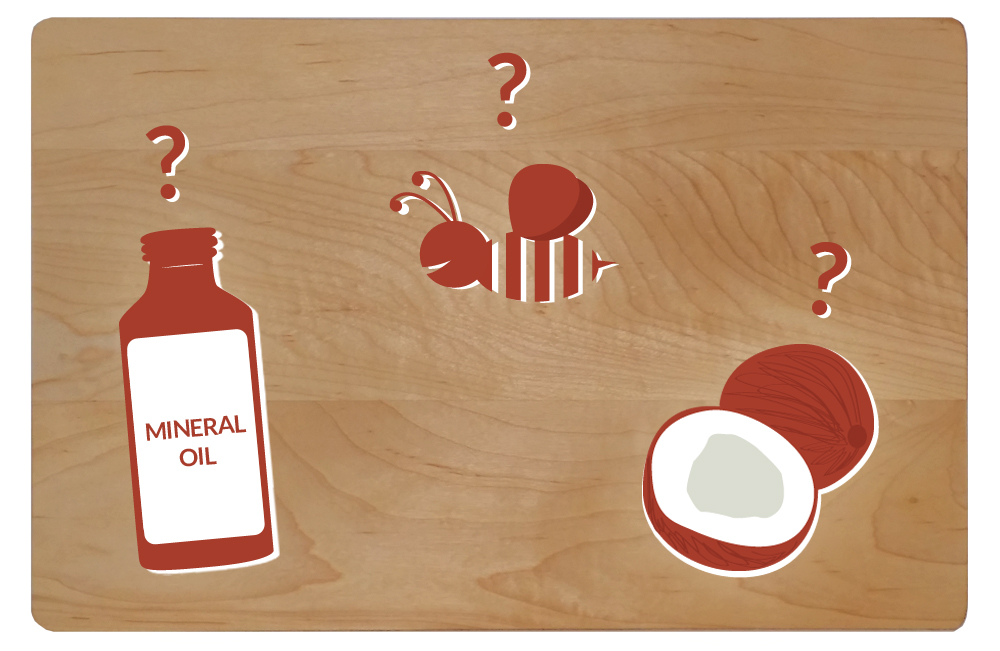
Hello you cutting boards fans! I, Annie the official Cutting Boards USA chef, made some experiments to compare a few cutting board finishes recommended when it comes to wear, smell, and easiness of application.
Obviously, I have several cutting boards I use at home, to cut all kinds of food and as serving trays. I use many sizes and wood grains and decided to share with you my very unscientific home comparative study of the products you can use to condition your boards.
Mineral oil used to be my favorite since ages. It is colourless, odourless, cheap and easy to find. It is also quick to apply and protects wooden cutting boards well. However, I felt I had to take the bottle out a little too often to my taste to re-season the boards is use the most often. It never mattered much to me it was not eco-friendly or vegan, since it is something that can easily be found at the drugstore and edible. But mineral oil is still a distillate from petroleum. This means it is a relative (to some extent) of the gas we fuel our cars with. Eww. Don’t get me wrong here though. I do not mean to criticize it or minimize its benefits. It is not the nature of the product I am questioning here, but mostly the refining process required. Mineral oil is obtained when petroleum (crude oil) is distillated to produce any petroleum-based product (such as petroleum jelly) or gasoline. It is actually a by-product of the refining process. No need to explain further that oil refineries are not the most enviro-friendly industries.
As a vegan and enviro-friendly alternative there is coconut oil. It is easier to apply when you melt it. This can be done in the microwave, on the stovetop or on a warm summer day. I was never a fan of it used alone, but it is vegan alternative to mineral oil. Another drawback I have is that the finish won’t last for long.
How to make the finish last longer? At one point, I decided to try the recipe to mix either mineral or coconut oil with beeswax, as I heard a few people would do, to see if it would improve the properties of the finish. For some reason, I was under the impression it would take long to make some board goo, or that it would be messy or gunky to keep in my pantry. And I was afraid I would overcook it or something (silly, isn’t it?). Still, I had to test it at one point before we’d recommend it to our customers! And then, bam! Revelation! I liked it waaayyyyyy better than the mineral oil alone, as it lasts longer than the oil finish (looks like it seals better), and was neither messy nor tricky to make.
Just melting one part of beeswax for 4 parts of mineral or coconut oil does the trick. It can be done easily in a saucepan on the stovetop or in the microwave in a measuring cup. Once melted, blend well together and pour in a mason jar and label it for future uses. Let cool before rubbing the paste to your clean cutting board with either your clean fingers or a cheese cloth. Keeping it a room temperature in the pantry is perfect for when you need to get more to recondition your wood cutting boards or wooden spoons. The texture is slightly creamier than creamed honey, has the same color as dark honey and has the delicate smell of beeswax. Putting in more beeswax in won’t make the finish better; it will only make it more expensive.
I strongly recommend making that little recipe to enhance the grain and protect your walnut or maple cutting boards from wear and to reapply as needed. And for any of your wholesale cutting board’s needs, visit AIM Wood Products & Engraving website!